Undersea Warfighting. Code Submariner US Navy. Part of 1
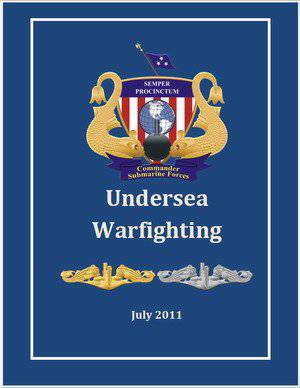 Central Naval Portal publishes a translation Code Submariner US Navy. The main provisions set forth in the Code are clear, well known and are used by submariners of all countries in their daily and combat activities. Russian submariners have the concept of "good practice of underwater service", which unites much of what is stated below. At the same time, there are significant differences, determined by the historically established paths of development of the submarine forces and the underwater service.
Central Naval Portal publishes a translation Code Submariner US Navy. The main provisions set forth in the Code are clear, well known and are used by submariners of all countries in their daily and combat activities. Russian submariners have the concept of "good practice of underwater service", which unites much of what is stated below. At the same time, there are significant differences, determined by the historically established paths of development of the submarine forces and the underwater service.War under water
Soldiers of the underwater front brought a unique and irreplaceable set of tools and capabilities for US national security. Thanks to secrecy, surprise and courage, underwater forces provide the effect of presence and containment on a scale that is far from proportional to their size and quantity. When our invulnerable and unnoticed submarine forces act together with the obvious and frightening force of carrier-based strike groups and expeditionary groups of marines, such a grouping is a formidable, flexible and very complex power projection of power.
The role of submarine forces in this alliance is based on the benefits dictated by being under water. Whether it is cold and lifeless Arctic waters or warm and lively tropical, peaceful or wartime, storm or calm - our submarine forces do everything to preserve secrecy in order to threaten the constant presence and enhance combat capabilities. The concealment makes it possible to carry out a variety of operations unnoticed, allows you to penetrate deep into enemy defenses, allows you to suddenly attack, surprising the enemy with the time and place of target selection, contributes to survivability and gives the enemy uncertainty and uncertainty, which greatly complicates his planning of operations. But all these advantages and attributes can not be achieved without the unremitting efforts of smart and brave fighters. Our submarine forces must be staffed with highly professional personnel with special technical and military knowledge, skills in the use of stealth, able to act independently, initiative, prone to tactical innovation and aggressive fighting persistence. Brave soldiers of the submarine front - a guarantee that our submarine forces are ready to fight in the shortest possible time, without hindrance, penetrate far ahead, make full use of the underwater maneuvering space, intercept the initiative of offensive actions and quickly adapt to the changing situation in the chaos of war.
For us, submariners, it is important that we understand the significance of the role played for the security of the country. Although technology, opponents and places of battles changed several times over stories, the main goal of our submarine forces remained unchanged: use the properties of the underwater environment to provide the military advantages of the United States. The set of skills that submariners should possess has not changed. The purpose of the Code is to provide our underwater warriors with common bases and perspectives that will serve as the basis for their training, planning and conducting training activities and peacetime operations. Such a reliable base will create the possibility of a smooth transition from peace to war, if necessary.
Part of 1. Required qualities of American submariners
Success in submarine warfare depends on the skillful use of technically complex systems in an environment hostile in all respects. Although the military leadership combines the effect of submarine warfare with the common efforts of the US Armed Forces, it is clear that underwater warfare is one of the types of independent wars and is carried out practically without external support. For underwater battles, a special breed warrior is required, who is a technical and military specialist, able to act covertly, autonomously, ready to take initiative, be creative, and be evil and stubborn.
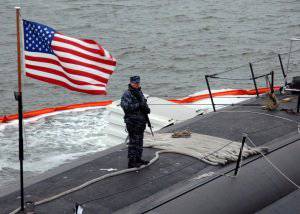 Submarine warfare depends on submariners. For the US Navy, it is not enough to have low-noise and fast nuclear submarines with excellent technical and combat characteristics and the ability to carry various technical devices and devices on board and outside. The fleet must be equipped with trained and experienced submariners in order to make the best use of expensive submarines and vehicles. To be effective, the submarine forces must have a number of qualities, and for this, the submariners must have special qualities. The US Navy requires from the professional personnel of the submariners:
Submarine warfare depends on submariners. For the US Navy, it is not enough to have low-noise and fast nuclear submarines with excellent technical and combat characteristics and the ability to carry various technical devices and devices on board and outside. The fleet must be equipped with trained and experienced submariners in order to make the best use of expensive submarines and vehicles. To be effective, the submarine forces must have a number of qualities, and for this, the submariners must have special qualities. The US Navy requires from the professional personnel of the submariners:- technical literacy
- military experience
- skills in the use of stealth,
- independence,
- initiatives
- tactical creativity
- perseverance.
Training submariners with such skills is an ongoing process that begins with the selection of high-quality personnel, providing training opportunities and gaining work experience, and then the right to temper their leadership in the crucible of the fighting. We practice such a set of skills from day to day in peacetime. The initiative does not appear in battle if it did not develop and was not encouraged in peacetime.
Independence cannot magically be acquired during a war — it is practiced on a daily basis when operators find their full use of their capabilities. Innovation and creativity are also in demand in terms of exercises and in daily activities, so we are confident that they will manifest themselves in the conditions of war.
Technical Literacy and Awareness
Submarine combat systems and submarines are mechanisms, and there is no chance of success in a submarine war if the weapons and equipment are not properly serviced and used for their intended purpose. As in aviation, submarine warfare is completely dependent on accident-free submarines. The submariners know that the technique can punish those who do not regularly service or incorrectly operate it in their own way - such a punishment may not follow today or tomorrow, but a poor attitude to the equipment will necessarily lead to trouble. Poor maintenance of systems and mechanisms may not affect their work today, but this will necessarily lead to premature failure of the equipment many years later, when life will depend on a particular device.
Submariners are competent and disciplined operators and care for their materiel. We know that achieving such a level of skill requires careful preparation and constant professional development, and only in this way can we meet the strict standards of ship service. Absolute knowledge of technology is the most important basis for its effective use in battle. Knowledge allows you to test the capabilities of hardware and gives experience in using design redundancy and reliability testing.
It is easy to see that there is technical readiness in relation to technical systems, such as an echo sounder, a weather controller, torpedo and missile mines, fire-fighting systems and a complex of movement. But the concept of technical readiness also applies to other areas that are not so obvious. The combat effectiveness of a submarine can be quickly undermined due to poor management of spare parts or due to illnesses of the crew due to poor sanitary conditions, due to injuries caused by unsafe work practices, due to the need to return due to failure something. The need for technical expertise in the performance of duties applies to all members of the submarine crew in all parts of the submarine.
Technical readiness is a key factor not only to eliminate material problems - it underlies the successful struggle for survivability. The practice of switching to standby operation modes and manual control of systems that usually work automatically is an essential component in the training of specialists. Exercises for debugging teamwork and organized activities have always been an important element of our success. Hard training and a thorough analysis of the lessons learned from the practice of our best crews have become characteristic in the underwater navy even before World War II. The decades of best practices have been one of our main strengths.
A hostile underwater environment places special demands on the character and personality of the divers. The safety of the entire crew often depends on the command of one person. Safety deep under water, in a complex machine with high pressures of liquids, nuclear power, voltage, explosives, is achieved by the common culture of the underwater service, personal responsibility, collective work and mutual support. The generations of submariners gave us these lessons, and we work hard to get every new submariner to learn them. This is part of us, this is part of our underwater DNA.
Combat experience
In addition to technical training, which is very important in its own right, real submariners have good combat experience. The basis of this experience is the comprehension of what has been done in the historical past, and the understanding of how this heritage continues to influence today's reality. This includes an assessment of the use of submarine forces by other fleets, our own combat experience, which serves as a starting point for predicting the possible use of submarine forces in the future.
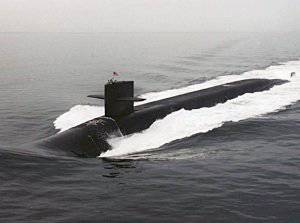 There are many new aspects of modern warfare that are the result of a high degree of automation in the age of computers. On ships equipped with the Aegis system, for example, radar and sophisticated fire and weapon control systems can detect, track and intercept several aircraft automatically, if necessary. Submarine warfare, however, despite the unconditional support of complex computer systems, will still depend on the human mind. The opaque nature of the underwater environment, the distortion of sound waves, the presence of interference and the active efforts of opponents to confuse and deceive each other are combined, which places increased demands on the knowledge and experience of underwater warriors. In the next section, we will see that ambiguity and uncertainty are mandatory companions of actions under water.
There are many new aspects of modern warfare that are the result of a high degree of automation in the age of computers. On ships equipped with the Aegis system, for example, radar and sophisticated fire and weapon control systems can detect, track and intercept several aircraft automatically, if necessary. Submarine warfare, however, despite the unconditional support of complex computer systems, will still depend on the human mind. The opaque nature of the underwater environment, the distortion of sound waves, the presence of interference and the active efforts of opponents to confuse and deceive each other are combined, which places increased demands on the knowledge and experience of underwater warriors. In the next section, we will see that ambiguity and uncertainty are mandatory companions of actions under water.Submarine forces often operate far ahead without the support of other friendly forces. This means that submarine forces are often the only really operating in these areas. As a result, after the First World War, it was proposed to use single submarines for various military operations in the forward echelons. Each of the military categories has its respective military elements. The crews of submarines are small - from half to one quarter of the number of sailors per ton of ship displacement - compared to a typical surface ship. A small submarine crew must be able to perform very diverse tasks of anti-submarine warfare, the fight against surface ships and evasion of air attacks, delivery of special operations forces, support for information operations, reconnaissance and mine warfare. Often these separate tasks must be performed simultaneously.
Important for the combat use of submarine forces is knowledge of the geography of the main hot spots in the world's oceans. There are areas of the oceans, which are becoming the most important battles. Knowledge of the conditions of the navigation area here can be the key. This is especially true for submariners, who must make full use of the "three-dimensional" model of action.
The sustainability of the mention of certain areas in naval history is due to the persistent nature of commercial shipping lanes, the location of world trade centers, the straits and narrows used. Submariners must have a firm understanding of the restrictions imposed by the conditions of the area, and make the best use of available data on its geography. Even with modern location systems, knowledge of the geography of the navigation area is crucial for a submariner.
Ability to use stealth and confidently attack
Submarines often act in conditions of information hunger, rather than an excess of data. All the smallest fragments of information available must be carefully studied in order to fully understand their essence. Most importantly, our submarine forces regularly work in conditions that allow them to hone the skills of crews in the application and assessment of the degree of their secrecy, in a manner accessible to them. Stealth is a property that cannot be measured, resulting from the interaction of a submarine and a sensor, and both are controlled by man in a changing environment, permeated by natural and man-made effects. There is no “stealth scale” that glows yellow when the risk becomes high and red when our submarines are detected. Submariners know that the only sensor of stealth is in the brain and soul of each member of the crew of a submarine. The whole story shows that it is necessary to carefully check this "device of secrecy" of a submariner in peacetime so that it can be used in wartime.
Before World War II, our submariners were trained in stealth, using the same techniques that had an effect on the enemy’s advantage, and as a result realized that they needed to take extreme precautions and tricks in order to survive. They switched to the constant practice of diving in the daytime, to performing daytime attacks using hydroacoustic data from maximum depths without the aid of a periscope and minimized the time spent on the surface. Transitions were slow, and the time spent on the position was insufficient. The accuracy of the torpedo attacks was very low. Too many commanders did not show enough perseverance. At the beginning of World War II, the experience of the command staff of the boats on assignment averaged 15,7 years of service, and by the end of the war 9,8 years of service, of which they spent 3,5 of the year in military campaigns.
The peacetime training sessions that did not meet the requirements of a real battlefield "calibrated" many of the older generation commanders, making the scale of their internal "stealth device" very sensitive, which limited their perseverance and success. Of the 465 commanders who served during World War II, only about 15 percent were successful, having more than half of the total number of all ships sunk. Of these 70 officers, only four died in combat (Morton, Daly, MacMilan, and Gilmore) and only four submarines died (Wahoo, Harder, Thresher, and Tang). This means that the most successful commanders and crews had a much higher survivability than the submarine forces in general. Submariners belonging to these 15 percent were three times more likely to return safely from a hike compared to the rest of the 85 percent of crews. Professionalism of attack, as a rule, is inseparable with a safe return to base.
Today's submariners prepare themselves for a future war, practicing in peacetime, taking into account the lessons of the past, seeking to achieve the necessary skills and qualities that guarantee victory. Among these skills, stealth and cunning are mandatory. Stealth is more than the noiselessness of a ship. It includes actions and activities carried out in the order most suitable for the task being performed in order to extract the maximum benefit with the least risk. Stealth means more than protecting yourself from detection. Stealth - the inability to identify and classify the boat even after detection. Stealth is the use of methods that prevent the determination of the place of the boat, even if it is discovered and classified. Submariners should strive to ensure that all the named tools are used, because war may require a ship and crew to risk, resulting in a ship being detected, and then the survivability of the boat will depend on how the crew uses all possible means and methods available in this setting.
Consider the example of a sniper marine. A sniper in a Ghillie camouflage suit is almost invisible. Indeed, in many cases, the sniper's secrecy is not in an effort to avoid detection, but in an effort to avoid recognition. Sometimes, when new snipers are introduced into the training course, the cadets are surprised to find that the “bush” they were in the field for half an hour is actually a deadly shooter. Submariners have at their disposal the same variety of options to achieve secrecy and the same skill and experience in using each of them.
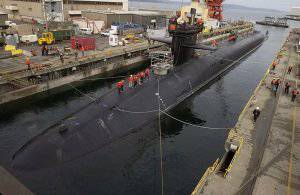 During World War I, Great Britain landed troops in Gallipoli in an attempt to break through to the Black Sea and to Russia, thereby separating the Ottoman Empire in Asia from the Axis states in Europe. To assist the landing party in Gallipoli, submarines penetrated the Sea of Marmara to stifle the actions of Turkish shipping, including in the port of Constantinople in the eastern part of the sea. These actions, undertaken for the first time in 20 years in the history of submarine combat use, included a full range of tasks: overcoming a minefield in narrowness, artillery shelling, disembarking swimmers for sabotage against coastal objects and on railways, torpedo attacks of ships, disembarking and scouting aboard and classic observation and report tasks. Even at this early stage, the submariners instinctively understood the importance of maintaining stealth. As a classic example of the methods used to preserve secrecy, the fact of placing buoys "with a broom" that imitate periscopes is given. These fake periscopes were supposed to attract the attention of Turkish destroyers, who, entering the attack on the "submarine", involuntarily fall into the trap, opening the board of a real submarine, ready for a torpedo attack. Creativity, innovation and cunning in organizing an attack are the cornerstone of training a submariner.
During World War I, Great Britain landed troops in Gallipoli in an attempt to break through to the Black Sea and to Russia, thereby separating the Ottoman Empire in Asia from the Axis states in Europe. To assist the landing party in Gallipoli, submarines penetrated the Sea of Marmara to stifle the actions of Turkish shipping, including in the port of Constantinople in the eastern part of the sea. These actions, undertaken for the first time in 20 years in the history of submarine combat use, included a full range of tasks: overcoming a minefield in narrowness, artillery shelling, disembarking swimmers for sabotage against coastal objects and on railways, torpedo attacks of ships, disembarking and scouting aboard and classic observation and report tasks. Even at this early stage, the submariners instinctively understood the importance of maintaining stealth. As a classic example of the methods used to preserve secrecy, the fact of placing buoys "with a broom" that imitate periscopes is given. These fake periscopes were supposed to attract the attention of Turkish destroyers, who, entering the attack on the "submarine", involuntarily fall into the trap, opening the board of a real submarine, ready for a torpedo attack. Creativity, innovation and cunning in organizing an attack are the cornerstone of training a submariner.Autonomy
Since the nature of the operations of the American submarine forces implies a long stay at remote frontiers, it goes without saying that the submarine forces must be autonomous, and the crews must proceed from the reserves that are on board. Autonomy really depends on careful preparation, creative repair in conditions of limited capabilities. The thoroughness with which the storekeeper fills the cabinets is the same reliability factor of a submarine as is the skill of a turner with a lathe or equipment with a soldering iron. In addition, daily proper maintenance leads to a reduction in the problem of technical wear and allows the submarine forces to perform planned operations without unplanned external assistance.
Submariners know that each entry into the base provides the enemy with a starting point, is a signal for reconnaissance. Each service call takes time to complete a task. Every moment with a faulty system reduces survivability and reliability, leading to greater danger for the ship. There must be specific reasons for unplanned changes to routes and tasks, unplanned external assistance. Such reasons arise in peacetime and in wartime. To avoid the causes of an unplanned visit for maintenance is to complicate the task of enemy reconnaissance. In addition, by following the planned schedule of actions, submariners allow other forces to stick to their plans. All experienced submariners know how troublesome it is to sail to the sea instead of another submarine, which was unable to do so at the last minute due to technical problems. The less time for preparation, the less effective the time of basic service, the higher the chances of failure of the task, the omission of time for training. The most important quality of submariners is the ability to act autonomously and independently: to minimize the risk of problems arising by careful maintenance of the equipment and its efficient operation, constant improvement of the ability to eliminate the problems that have arisen with minimal deviation from the operational plans.
Willingness to take the lead
Underwater warfare by its nature is conducted at a considerable distance and with limited communications capabilities. In addition, submariners often have the opportunity to form a deeper understanding of the position, location and character of the forces, which is not always available to the command. It is important that submarine commanders understand that they have the freedom to choose and act on the basis of the information received at remote positions. As a result, the command determines the priorities and leads the “plan of the commander”, and further depends on the initiative and decision of the submarine commander. This freedom of action allows the submarine commander to quickly make decisions in a rapidly changing environment in order to best fit the management's plan.
The development of self-confidence among the submarine commander is crucial to the overall potential of the submarine forces of the United States in achieving the expected result. The initiative is being trained and expected during combat training and on long hikes in peacetime, transmitted in the crew from the elder to the youngest as they gain experience and maturity. Submariners are well known for pushing any initiative through instances. Initiative is required to constantly sharpen.
In the operation of submarines there is no place for mistakes, especially in a combat situation. That is why the submarine fleet has long been using the system of training programs, advanced training in submarines and awarding the best. In the 1924 year, a few years after the pilots entered the mark of distinction - the wings, the submarine introduced its own sign - a dolphin to denote the qualification of a specialist in submarines. Part of the training that is necessary and necessary for all submariners is the scrupulous study of their ship and all systems so that all crew members can take all the necessary measures in any emergency situation that may arise during a battle, accident or daily actions.
Submariners are expected to take the initiative based on in-depth technical knowledge. Just as submarine commanders must take an initiative decision on the tactical actions of their ship, so must every member of the crew take the initiative in carrying out their duties. The initiative is the foundation of the combat potential, an essential element of life on a submarine.
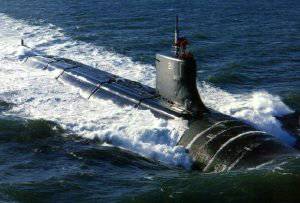 If a command to put the steering wheel to the left is given for laying on a new course, and the junior helmsman sees that he will come faster to the course by shifting the steering wheel to the right, he is obliged to report this. This gives the commander the opportunity to correct his order, unless the turn to the left was justified. The commander of the submarine welcomes such an initiative, since it shows that even one of the youngest sailors on the ship has a head and thinks. This kind of collaboration is a blessing for the ship, and it is a sign of a successful submarine service.
If a command to put the steering wheel to the left is given for laying on a new course, and the junior helmsman sees that he will come faster to the course by shifting the steering wheel to the right, he is obliged to report this. This gives the commander the opportunity to correct his order, unless the turn to the left was justified. The commander of the submarine welcomes such an initiative, since it shows that even one of the youngest sailors on the ship has a head and thinks. This kind of collaboration is a blessing for the ship, and it is a sign of a successful submarine service. Tactical creativity and innovation
Demonstration of tactical innovations has become a habit of submariners. In the history of submarine warfare, real combat operations always differed from those that were expected before they began. The rules are constantly changing. Before the attack on Pearl Harbor, American submarines were preparing to act in accordance with the rules that require warning any civilian ship before its attack. Six hours after the attack on Pearl Harbor, COMSUBPAC (Command of Submarine Forces in the Pacific) received an order from the maritime agency "Start an unlimited air and submarine war against Japan." This required a quick adjustment of the operational use of submarines and how they perform combat missions.
As already mentioned, the submariners are confronted by the forces of antisubmarine warfare possessing much greater capabilities, which gives the antisubmarine forces confidence in themselves, and the submariners cast doubt on their secrecy. Winston Churchill, describing the history of World War II, recalls how he was at sea in the 1938 year, where he saw how effective the sonar was in searching for submarines. He notes that he was surprised at the "clarity and clarity" of the signal, as if he were "one of those creatures that are asking for destruction." He lamented later: "Without a doubt, this time I overestimated their accomplishments, forgetting for a moment how immense the sea is." You cannot know what changes are waiting for those who go to sea for a combat operation, but submariners must clearly understand that tactics, rules and military situation will be different than they expected, and that they will have to adapt to the changes or subject themselves and their ships dangerous risk.
Tactical innovations must be applied on every ship, in every subdivision, and discussed in every cabin. The idea of the Eklund Polygon was born at sea, and then was confirmed and refined by teachers of the school of submariners. The idea of quickly reloading torpedo tubes during the battle, rather than after exiting, was developed and tested by a young torpedo officer at Parche during World War II and was crucial to the success of the Japanese submarine 31 July 1944 convoy attack. Red Ramage penetrated into the center of the column at night on the surface and, remaining alone on the bridge, fired 48 torpedoes in 19 minutes, becoming the only holder of the Medal of Honor to date among the submariners.
"Tactical news" is not necessarily limited to combat. In 1972, the Barb boat urgently left Guam, despite a notice of a typhoon approaching in an hour, to throw an 300-mile throw in an attempt to save the X-NUMX crew of the B-8 crew that crashed in the ocean shortly after taking off from Andersen AFB airbase. Strong sea waves forced all other vessels to leave the search area, but the Barb crew took the initiative, as a result of which they managed to lift the 52 pilots on board, despite the 6-foot waves. Leaving only the manhole open, the watch tied itself to the fence, and six people in a strong hull were ready to draw exhausted and wounded pilots from the surface of the sea. The foreman of torpedoists, who sailed to the first group of lifeboats to transfer the end, was awarded a medal of the Navy and Marines for the heroism shown in salvation. This kind of creativity on a submarine or on other submarine systems will always be important, but submariners must practice it regularly so as not to depend on circumstances.
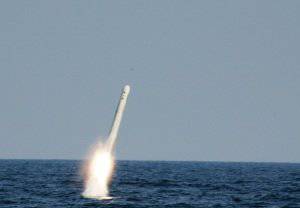 The need for tactical innovations will only grow in the future with the introduction of new underwater technologies, especially unmanned systems. The need for coordination between underwater systems is becoming increasingly important. Submariners are specialists of the Navy in the "underwater war" or the war out of the water. The Company is responsible for the full provision of this activity, the provision of a complete and coordinated set of funds. As pilots observe certain rules for preventing collisions of aircraft, and surface forces have established rules for preventing collisions of ships, submariners must comply with certain requirements that regulate the use of underwater spaces — including the prevention of mutual interference, maneuvering, and the management of underwater systems.
The need for tactical innovations will only grow in the future with the introduction of new underwater technologies, especially unmanned systems. The need for coordination between underwater systems is becoming increasingly important. Submariners are specialists of the Navy in the "underwater war" or the war out of the water. The Company is responsible for the full provision of this activity, the provision of a complete and coordinated set of funds. As pilots observe certain rules for preventing collisions of aircraft, and surface forces have established rules for preventing collisions of ships, submariners must comply with certain requirements that regulate the use of underwater spaces — including the prevention of mutual interference, maneuvering, and the management of underwater systems.Unmanned submarine fleet (UUVs) - a new and rapidly growing part of the submarine forces of the United States, and at the same time it is necessary that the growth took place smoothly and harmoniously. For example, the development of UUVs may require the emergence of new personnel specialists; knowledge of the operation of UUVs may become part of the training program for specialists of the forces already present. UUV can be placed on board and used by crews of other combat platforms (submarines, ships, coastal bases). Or, UUVs may be an organic part of ship systems. Here are some of the most difficult issues that submariners will have to face and solve in the coming years. One thing is for sure: it is certain that in the near future it will be necessary to define and professionally develop the staffing of the personnel team for servicing UUVs and related systems. Submariners who currently form submarine crews should be part of this team.
Offensiveness and anger
In the depths of the seas, most likely, underwater wars will continue to consist in exchanging attacks and evading them. The success of the submarine forces in the past was built on perseverance and the will to continue the attacks time after time until the target is hit or the possibility of an attack is irretrievably lost. Mush Morton once said to Dick O'Kane after a long chain of attacks: "Perseverance, Dick. Stay with the bastard until he sinks to the bottom." Such aggressiveness was essential for the effective conduct of submarine warfare. A significant advantage is given to one who knows how to use the chaos and disorder that came after the usual calmness. Nerves are at the limit, and the sailors - all as in humans - will make decisions under the influence of emotions. This can also be used for good.
For the sake of a common goal, strength, audacity, and courage are limited because it is generally accepted: the more order and discipline in joint actions, the better. However, such interdependence and joint efficiency is suitable for surface forces, but does not work in the underwater world. Surface forces and air forces create "concentration" and "power", but this is not applicable for submarines. Submarine forces act to achieve a common goal, coordinating their actions with the rest of the naval forces, and the submarines participate in joint actions of the group, but it is best for them to achieve the maximum effect - to act independently. Coordination and regularity require time and constant communication, and this is exactly what the submarine forces, who sacrifice themselves, do not have to do to the enemy. The goal of the underwater forces is to act on the front lines in such a way as to create and maintain in the mind of the enemy a sense of disorder, vulnerability, chaos and uncertainty.
What qualities of character a submariner should possess, is still being discussed, but perseverance and aggressiveness should be present. This does not mean that in peacetime it is worth taking the risk that is possible during a war. But it must be said that the creative application of perseverance within the appropriate limits in everyday exercises or long voyage is acceptable and expected.
When Operation Storm in the Desert was being prepared, the commander of Pittsburgh, Captain 2 of the rank of Chip Griffiths, was engaged in mezhpohodovym repair of his ship and did not plan to participate in battles. As one of the few submarines with a vertical launch of TLAM missiles in the submarine fleet Pittsburgh dropped out of the cage. Griffiths, possessing the will and perseverance that characterizes most commanders in the history of submarine forces, gathered his mess-room and repair managers and asked: "What is everyone going to take to bring this ship to the line of fire at the right time?" Having infected all the crew and repair crews with creative energy, he managed to complete the repair, load the missiles, and complete the operational deployment before the start of the operation. This is perseverance. This is something like a reluctance to fail, which is typical of most submariners.
The presence of exceptionally talented and well-trained personnel is a necessary, but not the only condition for the success of the submarine forces. Submarine forces must be equipped with the latest technology to effectively and fully contribute to national security. The following section discusses the benefits of weapons and equipment for successful use in the depths of the oceans.
Information